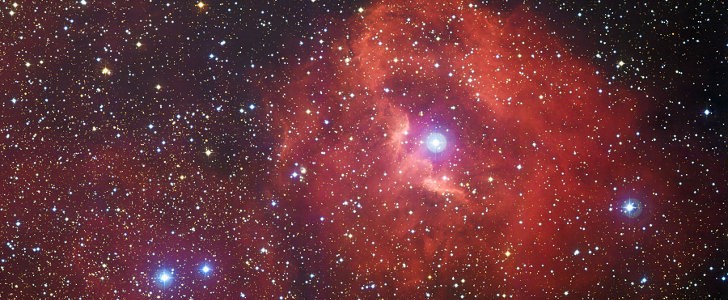Science
Related: About this forumInvisible Hydrogen Cloud Imaged by ESO Telescope
April 17th, 2014, 10:00 GMT · By Tudor Vieru
Invisible Hydrogen Cloud Imaged by ESO Telescope

Researchers operating the Wide Field Imager (WFI) instrument on the MPG/ESO 2.2-meter (7.2-foot) telescope at the La Silla Observatory in Chile have just released a new image of a very large hydrogen cloud. The feature was first observed more than half a century ago by Australian astronomer Colin Gum, and it was named Gum 41 in his honor.
The nebula was observed in images collected by the Mount Stromlo Observatory near Canberra and was first made public in 1955 in Gum's catalog of 84 emission nebulae. In this recent ESO image, we can see that the central regions of the formation include numerous new stars, which burn brightly and irradiate their surroundings with vast volumes of radiations.
According to astronomers, the reddish hue characteristic of emission nebulae appears as a result of ultraviolet, optical, and infrared radiations released by protostars as they get ready to enter their main stage. The radiations ionize and heat up the surrounding hydrogen clouds, making them glow at infrared wavelengths. The WFI is very sensitive to this portion of the electromagnetic spectrum.
Gum 41 is located around 7,300 light-years away from Earth, in the southern constellation Centaurus (The Centaur). It is an integral part of the weirdly-named Running Chicken Nebula, a much larger structure known among astronomers as the Lambda Centauri Nebula. The most interesting thing about Gum 41 is that is has an extremely low density, meaning that it would be invisible to an astronaut flying through it.
http://news.softpedia.com/news/Invisible-Hydrogen-Cloud-Imaged-by-ESO-Telescope-438185.shtml
Fumesucker
(45,851 posts)Pretty picture and interesting facts but the prose could stand some tightening.
Most of space is "invisible to an astronaut flying through it", that makes it especially interesting.
Got it.
Jgarrick
(521 posts)Would be like going through a brightly-glowing cloud.
